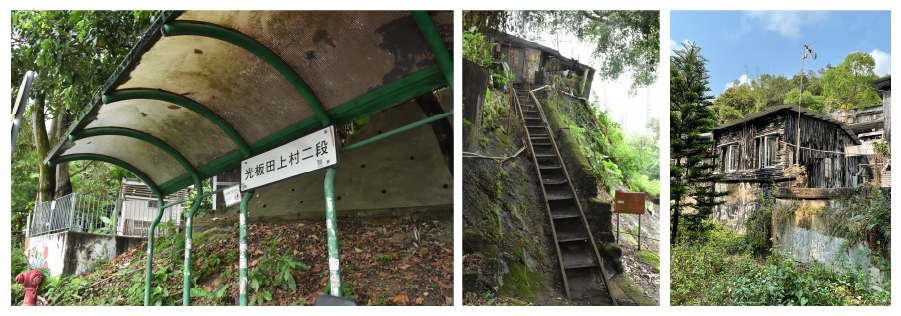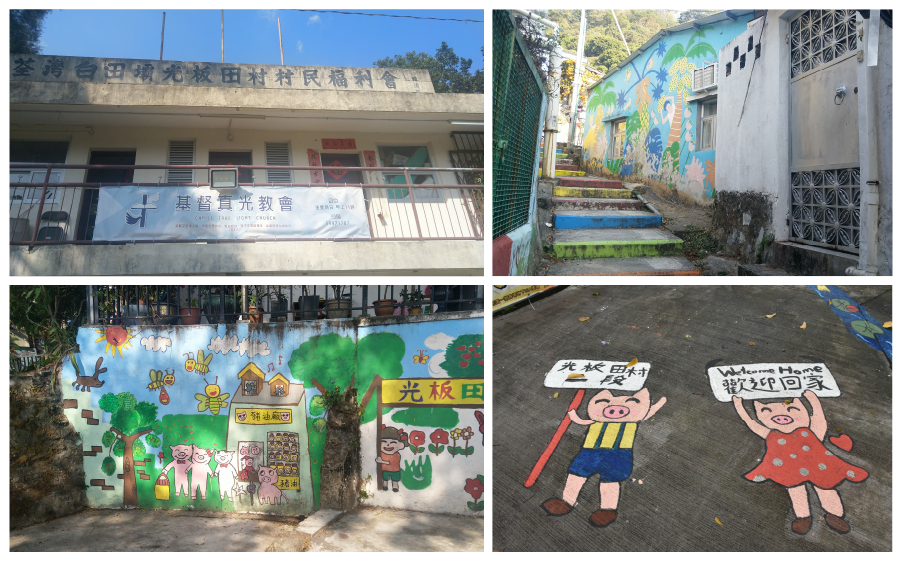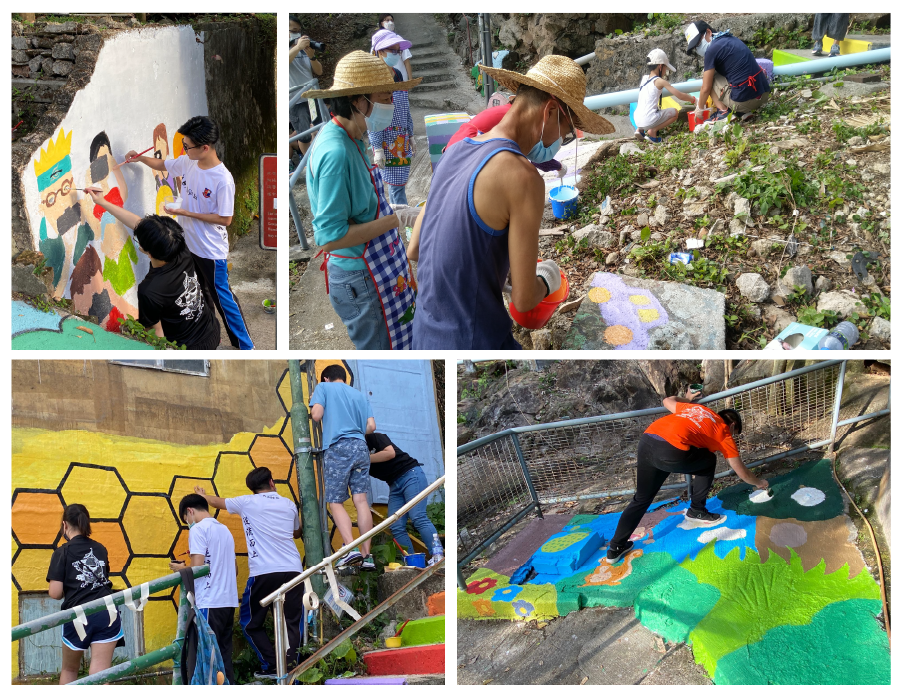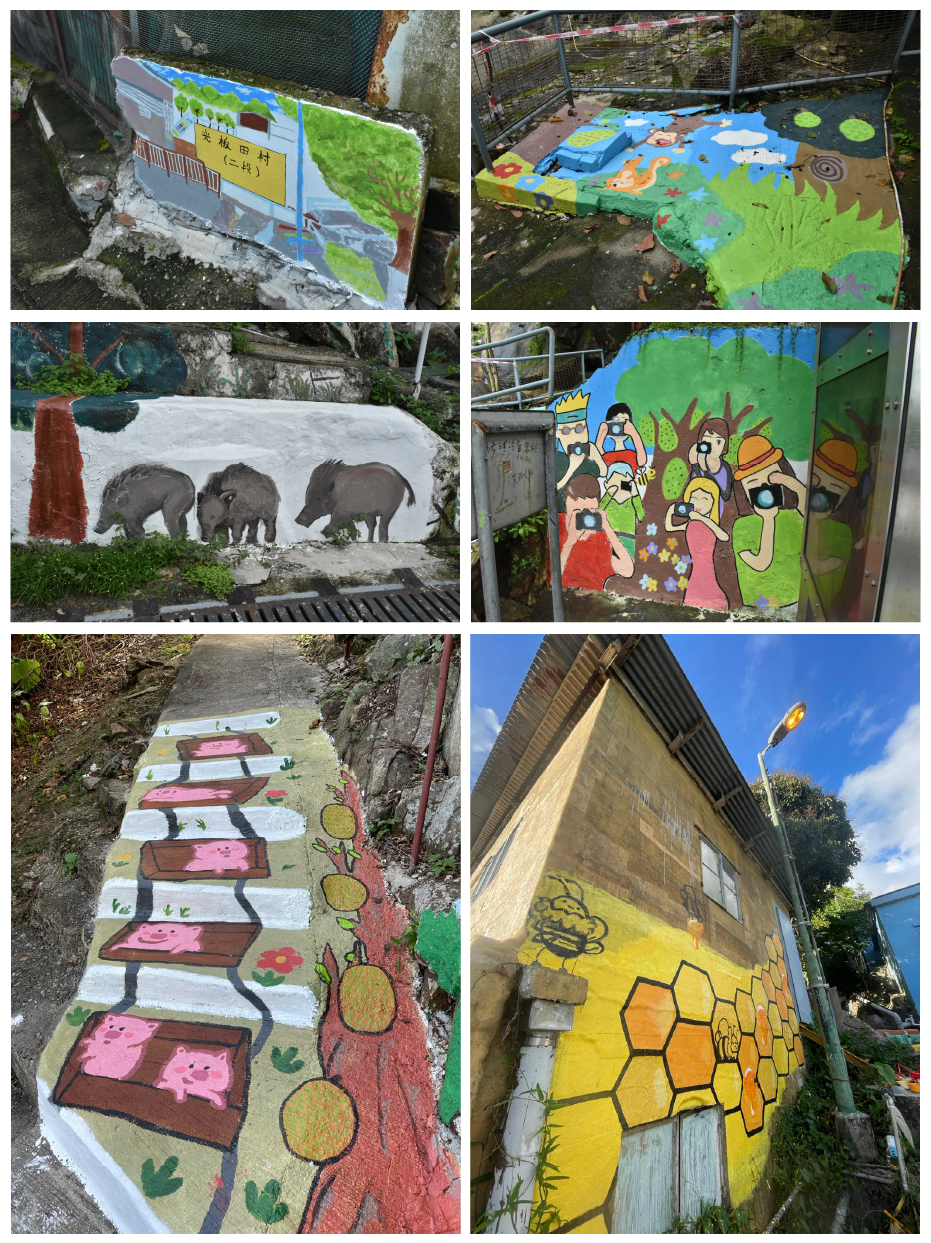The Department has recently concluded the first phase of a community engagement project with the Salesians of Don Bosco Ng Siu Mui Secondary School (SDBNSM). The first phase at the Kwong Pan Tien Tsuen (光板田村) in Tsuen Wan had EdUHK students collaborating with students to complete the restoration and painting of murals in the village. Students from both sides had a valuable opportunity to learn more about the history, development and current needs of the village from residents.
Kwong Pan Tien Tsuen (光板田村) is a rural village which was established in the 1950s following the growth of Hong Kong’s population. At that time, most of the residents gained their living from agriculture and poultry or keeping pigs. In the 1970s, the village had many small-scale factories producing different kinds of electronic products to cope with the keen demands from the growing economy in Hong Kong. However, with more and more new towns that developed across the territory, the population of the village gradually dropped over the years with some residents opting for a better living environment in towns. Originally, the village was composed of four sections scattered around the Southern part of Route Twisk linking Tsuen Wan and Pat Heung in the New Territories. The land of one section (the fourth section) has now reclaimed for the building of new private housing estates, so only three sections remain nowadays.
 Around 30 students from both EdUHK and SDBNSM participated in this project for two months. The planning of the project also had the support from our community partner Little Green Feet (綠腳丫) as well as representatives from the Welfare Association of Tsuen Wan Kwong Pan Tien Tsuen (荃灣光板田村街坊福利會). The Association has a group of passionate residents who are volunteers for the organisation of different activities and events within the village. The mural painting activity was one of the attempts to renovate and reenergise the village environment in collaboration with external parties, for example, universities, NGOs and other organisations. The activity was proven to be successful as the village is now known for its artistic decoration completed at various locations. Its publicity has helped the village gain better support in addressing the needs of the residents, such as infrastructure, transportation and social welfare service for the elderly.
Around 30 students from both EdUHK and SDBNSM participated in this project for two months. The planning of the project also had the support from our community partner Little Green Feet (綠腳丫) as well as representatives from the Welfare Association of Tsuen Wan Kwong Pan Tien Tsuen (荃灣光板田村街坊福利會). The Association has a group of passionate residents who are volunteers for the organisation of different activities and events within the village. The mural painting activity was one of the attempts to renovate and reenergise the village environment in collaboration with external parties, for example, universities, NGOs and other organisations. The activity was proven to be successful as the village is now known for its artistic decoration completed at various locations. Its publicity has helped the village gain better support in addressing the needs of the residents, such as infrastructure, transportation and social welfare service for the elderly.
 This co-organised project shared the same vision with the previous mural paining activities in the village. The project hoped that students could utilise their senses to reestablish and reconsider their connections with the land and community throughout the whole experience. Synergy within the team was another crucial element as students had to brainstorm and collaborate in the process, with the goal of producing a mural which could best reflect the village after studying its oral history and listening to the sharing from some of the village residents. Our students, with many of them being pre-service teachers, could also gain some valuable experience in this project, in turn, helping them to reconsider the roles of teachers and students in education as well as the relationship between school and the community for learning.
This co-organised project shared the same vision with the previous mural paining activities in the village. The project hoped that students could utilise their senses to reestablish and reconsider their connections with the land and community throughout the whole experience. Synergy within the team was another crucial element as students had to brainstorm and collaborate in the process, with the goal of producing a mural which could best reflect the village after studying its oral history and listening to the sharing from some of the village residents. Our students, with many of them being pre-service teachers, could also gain some valuable experience in this project, in turn, helping them to reconsider the roles of teachers and students in education as well as the relationship between school and the community for learning.
 At the end, six groups completed their murals at different locations within the village. The murals included elements that can best present the village’s history and culture, such as bee-keeping and the famous jackfruit that grows in the village. Some groups also integrated novel elements to facilitate the exchange between visitors and the village. The completed work received highly positive feedback from residents, who considered the newly painted murals could capture the essence of the village in an innovative way.
At the end, six groups completed their murals at different locations within the village. The murals included elements that can best present the village’s history and culture, such as bee-keeping and the famous jackfruit that grows in the village. Some groups also integrated novel elements to facilitate the exchange between visitors and the village. The completed work received highly positive feedback from residents, who considered the newly painted murals could capture the essence of the village in an innovative way.
 The first phase of the project has provided some encouraging results in showing that the experiential learning elements had positive effects on both the University and secondary school students. We hope that the second phase of the project can further extend the effects to a wider group of students. The second phase is likely to commence in September or October this year. More news will be updated in the near future. Stay tuned!
The first phase of the project has provided some encouraging results in showing that the experiential learning elements had positive effects on both the University and secondary school students. We hope that the second phase of the project can further extend the effects to a wider group of students. The second phase is likely to commence in September or October this year. More news will be updated in the near future. Stay tuned!